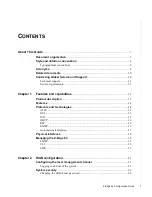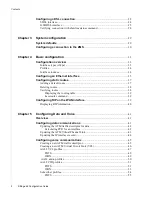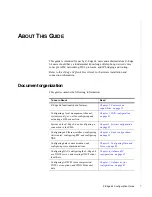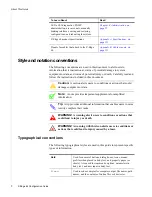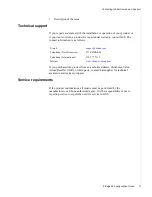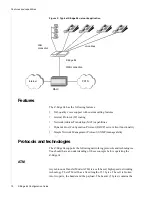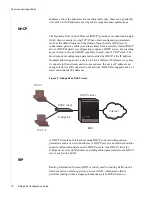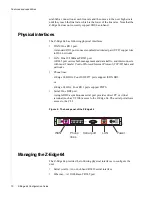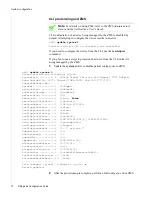
Protocols and technologies
Z-Edge 64 Configuration Guide
17
distance-vector algorithms that measure the shortest path between two points
on a network, based on the addresses of the originating and destination
devices. The shortest path is determined by the number of hops between those
points. RIP routers maintain only the best route (the route with the lowest
metric value) to a destination. After updating its routing table, the router
immediately begins transmitting routing updates to inform other network
routers of the shortest route.
Routing Information Protocol version 2 (RIPv2) is the latest enhancement to
RIP. RIPv2 allows more information to be included in RIP packets and
provides an authentication mechanism.
SNMP
Z-Edge 64 users can manage their system with Simple Network Management
Protocol (SNMP) software. SNMP is based on network management stations
(managers) and network managed elements (agents). SNMP allows network
managers and network agents to communicate.
There are three types of SNMP transactions—a Get, a Set, or a Trap. The Get
and Set commands are sent from the manager to the agent to determine (Get)
or configure (Set) network variables and status. A Trap is an exception to this
SNMP transaction pattern, in that the Trap is an unsolicited event report sent
from the agent to the manager. When the SNMP manager receives the Trap
message, it can be stored in the Management Information Base (MIB) and
displayed on a terminal screen.
A MIB is a virtual database that identifies each manageable object by name,
syntax, accessibility, status, a text description, and a unique
manageable-Object Identification number (OID). MIBs come in three
varieties: Public, Experimental, and Private Enterprise.
Automatic rate adaption
Automatic baud rate detection (also known as rate adaption) allows receiving
devices to communicate with transmitting devices operating at different
speeds without the need to establish data rates in advance. By determining the
baud rate from the transmitting device, the receiving Z-Edge 64 automatically
trains to match the line rate of the incoming data.
Usually there is one central office (CO) device transmitting to many customer
premises equipment (CPE) units. When a CO device trains with a CPE unit,
the devices will settle on the lower of the two devices’ line rates. It is optimal
to set the CPE line rate to 2320 kbps because it allows a wide range of rates
for CO and CPE devices to agree upon.
The training of line rates is faster on G.SHDSL than on SDSL. The G.SHDSL
rate adaption process occurs during the CO and CPE modems’ handshake,
where the devices probe the G.SHDSL line to find the best possible line rate.
The SDSL autobaud process is slower because the CO and CPE modems use
an algorithm to step through a sequence of line rates, where the devices

